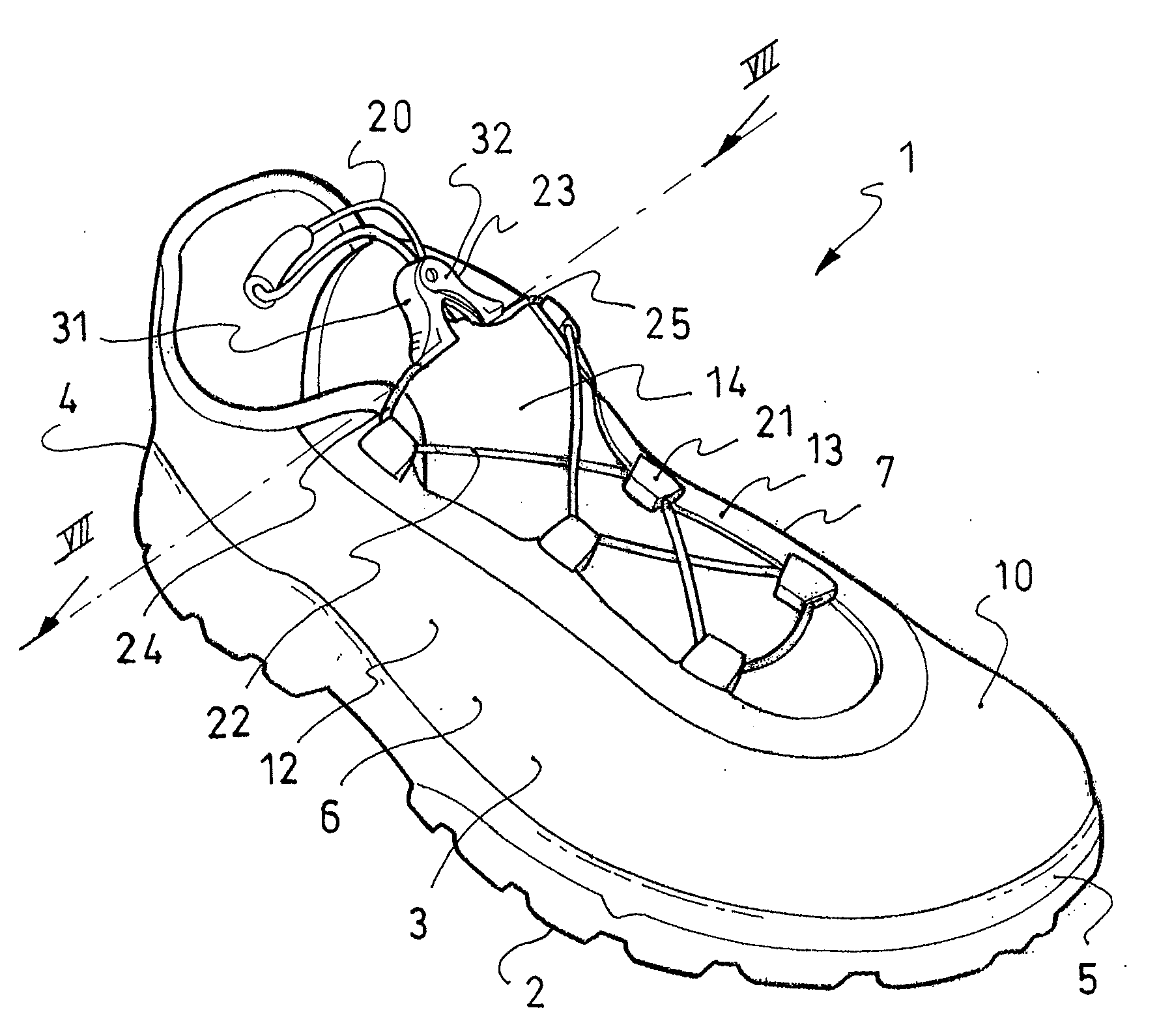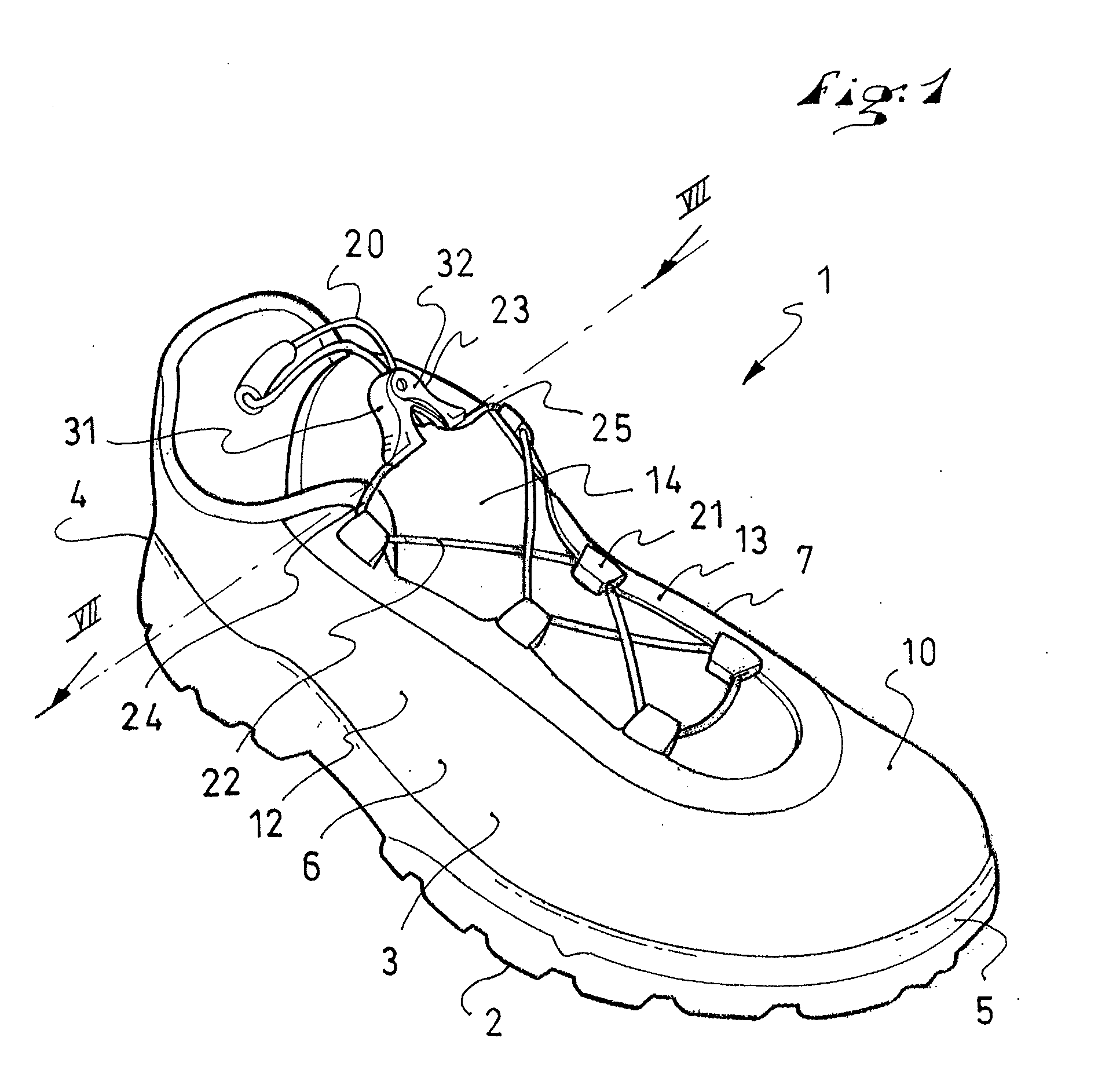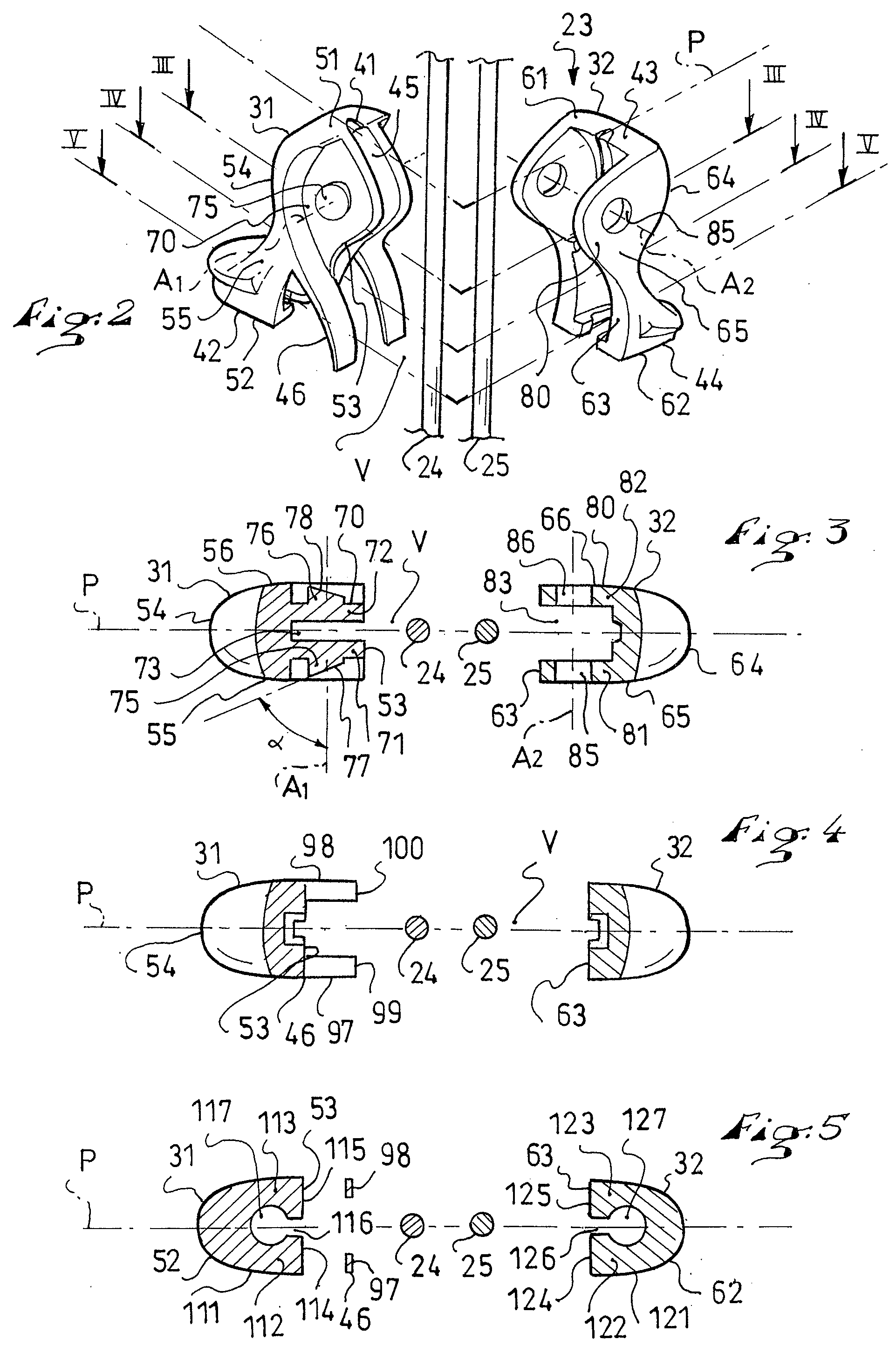Device for locking flexible strands
a flexible strand and mechanical technology, applied in the direction of shoes/pulleys, ropes, shoelace fastenings, etc., can solve the problems of reduced device size, difficult operation, and difficulty in unlocking operation, so as to facilitate the unlocking operation of the locking device, improve the reverse operation, and facilitate the unlocking operation.
- Summary
- Abstract
- Description
- Claims
- Application Information
AI Technical Summary
Benefits of technology
Problems solved by technology
Method used
Image
Examples
first embodiment
[0039]The first embodiment described hereinafter relates more specifically to shoes for walking or running on flat or uneven ground. However, the invention applies to other fields, such as those mentioned hereinabove, including bags, garments, etc.
[0040]The first embodiment is described hereafter with reference to FIGS. 1 to 9.
[0041]As shown in FIG. 1, a running shoe 1 is adapted to receive the wearer's foot.
[0042]In a known manner, the shoe 1 includes an outer sole assembly 2 and an upper 3 arranged on and secured to the sole assembly. The shoe 1 extends lengthwise between a rear end, or heel 4, and a front end, or tip 5, and widthwise between a lateral side 6 and a medial side 7.
[0043]As shown, the upper 3 includes a lower portion 10, provided to surround the foot, but does not have an upper portion. However, the upper could also be provided to include an upper portion. That is, the illustrated shoe has an upper side that extends below the area of the ankle. However, the upper cou...
second embodiment
[0081]The second embodiment is shown with reference to FIG. 10. It includes a first portion 31 and a second portion 32 connected to one another by an articulation 40. Again, two strands 24, 25 pass within the locking device 23, in the plane P, between the first ends 51, 61 and the second ends 52, 62.
[0082]What is specific to the second embodiment is the structure of the elastic mechanism designated by the reference numeral 136. This elastic mechanism 136 still includes a first blade 137 and a second blade 138. However, the first blade 137 here projects from the inner side 53 of the first portion 31, in the area of the second end 52, while the second blade 138 projects from the inner side 63 of the second portion 32, in the area of the second end 62. This means that the elastic mechanism 136 is carried by the two portions 31, 32. The operation of the device according to the second embodiment is similar to that according to the first embodiment.
third embodiment
[0083]The third embodiment is shown with reference to FIG. 11. It also includes the portions 31, 32 and the articulation 40, as well as the strands 24, 25.
[0084]What is specific to the third embodiment is again the structure of the elastic mechanism, here identified by reference 146. This elastic mechanism 146 includes a single attached blade 147 that connects the portions 31, 32 to one another, for example from the second end 52 to the second end 62. The blade 147 is generally C-shaped, and includes any suitable material, such as metal, plastic, or the like. The blade 147 is affixed to each portion 31, 32, or to only one, by any appropriate means. According to the third embodiment, the locking device 23 includes three elements.
[0085]The fourth embodiment is shown with reference to FIG. 12. Here, the locking device 23 is identical or similar to that according to the first embodiment. A particular feature of the fourth embodiment relates to the strands 24, 25 of the lace. The first s...
PUM
 Login to View More
Login to View More Abstract
Description
Claims
Application Information
 Login to View More
Login to View More - R&D
- Intellectual Property
- Life Sciences
- Materials
- Tech Scout
- Unparalleled Data Quality
- Higher Quality Content
- 60% Fewer Hallucinations
Browse by: Latest US Patents, China's latest patents, Technical Efficacy Thesaurus, Application Domain, Technology Topic, Popular Technical Reports.
© 2025 PatSnap. All rights reserved.Legal|Privacy policy|Modern Slavery Act Transparency Statement|Sitemap|About US| Contact US: help@patsnap.com



